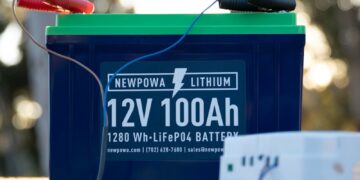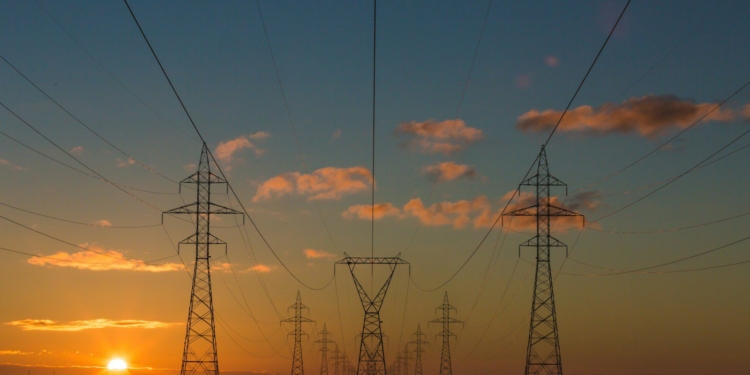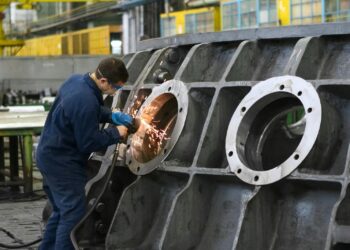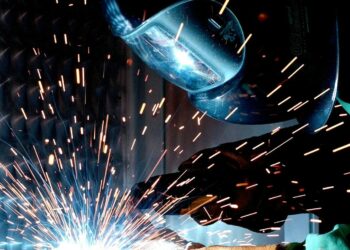By Positive Phil | EcoBusinessNews.com
As America’s appetite for energy-intensive computing, electrification, and resilient infrastructure accelerates, one question looms large: how can we power this transformation reliably, sustainably, and at scale?
The answer, increasingly, lies in a sophisticated hybrid model that combines natural gas cogeneration (also known as Combined Heat and Power or CHP) with advanced battery storage systems. These technologies, once deployed in isolation, are now converging to create flexible, high-performance microgrids and distributed energy solutions that are reshaping the energy landscape across the United States.
Cogeneration: High-Efficiency Power at the Edge
Natural gas cogeneration has long been recognized for its efficiency. By simultaneously generating electricity and capturing usable thermal energy from a single fuel source, CHP systems can achieve energy efficiencies of up to 80%, far surpassing the sub-40% efficiency typical of centralized power plants.
These systems are particularly well-suited to large facilities that require both electricity and heat, such as:
- Data centers
- Manufacturing plants
- Hospitals
- Universities
- Government campuses
In regions where power grid reliability is uncertain, or where energy costs fluctuate wildly, cogeneration offers a proven pathway to energy independence, resiliency, and cost control.
Learn more from the U.S. Department of Energy’s CHP Deployment Program.
Batteries: The Flexibility Engine
While cogeneration provides reliable base load power, battery energy storage systems (BESS) add the flexibility needed to adapt to modern energy demands. With the ability to charge and discharge on demand, batteries serve as both a backup system and a grid-interactive asset, enabling:
- Peak shaving during high-cost periods
- Load shifting to optimize time-of-use rates
- Instantaneous response for critical systems during outages
- Participation in demand response and ancillary markets
Battery technology has also evolved rapidly. Modern lithium-ion, flow battery, and hybrid chemistries now offer longer duration, greater scalability, and lower degradation—making them viable for both behind-the-meter and utility-scale deployment.
Explore insights on BESS applications from the Energy Storage Association.
Why the Hybrid Model Works
When CHP and BESS are combined into a hybrid system, the result is greater than the sum of its parts:
- Cogeneration supplies efficient, dispatchable base load power
- Batteries provide instantaneous responsiveness and load balancing
- Together, they create a system that can operate grid-tied, islanded, or grid-optional
In environments where uptime is paramount—think hyperscale data centers, AI compute clusters, or advanced manufacturing—the hybrid model supports Tier IV resiliency standards, while enabling participation in ESG-aligned energy strategies.
The Forces Driving Hybrid Adoption
Several powerful forces are pushing hybrid energy systems into the mainstream:
1. AI and Hyperscale Data Growth
The exponential rise in AI workloads, cloud computing, and data center builds is creating an urgent demand for clean, resilient, 24/7 power. Hybrid systems allow these facilities to avoid grid bottlenecks and meet escalating internal carbon targets.
See how data centers are reshaping energy demand.
2. Electrification of Industry
As industrial sectors pivot from fossil fuels to electrification, their peak loads are increasing. Hybrid CHP + battery systems allow facilities to self-supply, reduce grid strain, and manage demand charges.
3. Grid Decentralization
Grids are shifting from top-down models to distributed energy resource (DER) architectures. Hybrid power systems fit naturally into this model, enabling localized energy generation and storage.
4. Incentives and Regulatory Support
Recent policy shifts, such as the expansion of the Investment Tax Credit (ITC) for batteries and hybrid systems, make these solutions more financially viable. Additionally, federal and state-level programs are encouraging DER adoption.
Stay current with DSIRE’s comprehensive incentive database.
From Niche to Norm: Case Studies and Real-World Growth
In Texas, battery-backed gas CHP systems are becoming a core part of ERCOT’s resiliency strategy. Facilities are hedging against blackouts by deploying hybrid systems that remain fully functional during extreme weather and grid instability.
In California, where utilities routinely implement Public Safety Power Shutoffs (PSPS), industrial campuses and healthcare facilities are investing in hybrid microgrids to maintain critical operations.
In the Midwest and Northeast, aging grid infrastructure and volatile utility rates have led universities, biotech clusters, and high-tech manufacturing sites to adopt hybrid systems as a hedge against rising power costs and uncertain reliability.
Looking Ahead: Resilience, Flexibility, and Sustainability
The future of energy in the U.S. will be increasingly modular, intelligent, and hybridized. Whether in support of AI mega-facilities or industrial sustainability goals, the pairing of cogeneration with battery storage presents an elegant solution to one of the decade’s most urgent challenges: how to provide resilient, clean, and cost-effective energy at scale.
Hybrid power systems are no longer speculative—they’re strategic. And they’re building the foundation for the next era of American innovation.
About the Author
Philip “Positive Phil” Morgan is a clean energy strategist and sustainability influencer focused on accelerating the deployment of resilient, future-ready energy systems across North America.



















